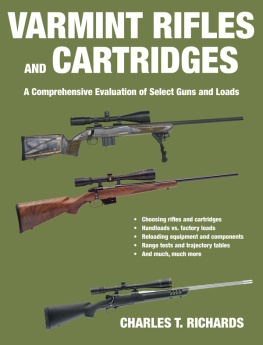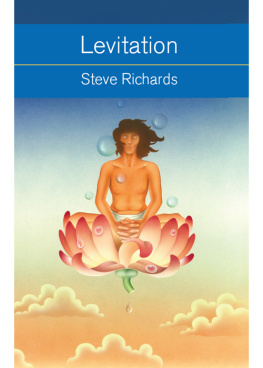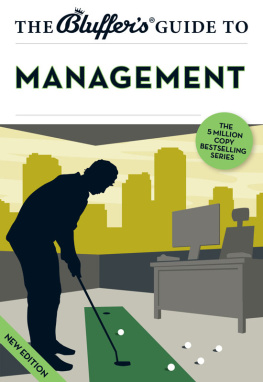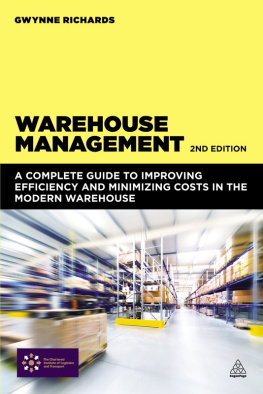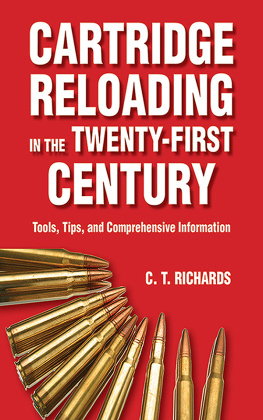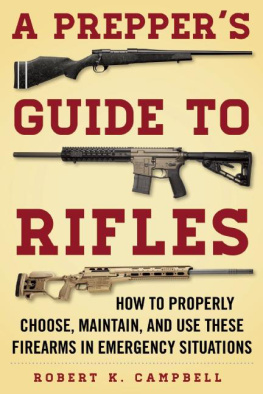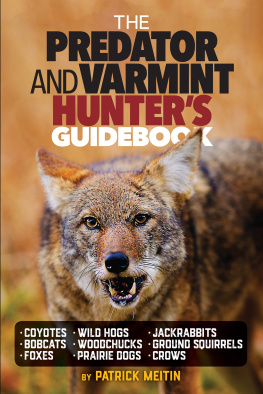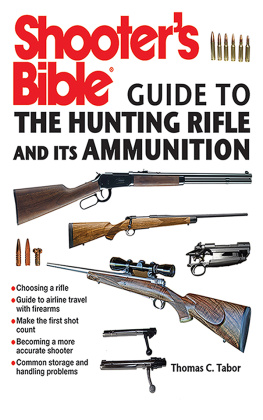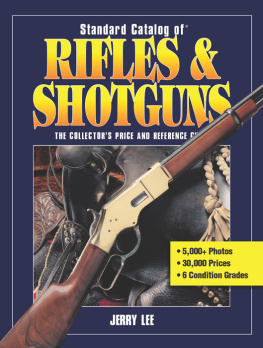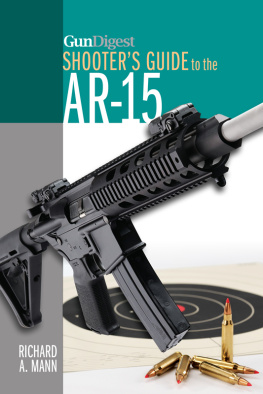Also by the Author
Cartridge Reloading in the Twenty-First Century

The views and opinions expressed by the author in this book are not necessarily those of the publisher, and no responsibility for these views is assumed.
Since neither the author nor publisher has control over how the information contained in this book is used, no responsibility is implied or assumed regarding how the reader uses this material.
Copyright 2014 by Charles Richards
Unless otherwise specified, all photos copyright 2014 by Charles Richards
All Rights Reserved. No part of this book may be reproduced in any manner without the express written consent of the publisher, except in the case of brief excerpts in critical reviews or articles. All inquiries should be addressed to Skyhorse Publishing, 307 West 36th Street, 11th Floor, New York, NY 10018.
Skyhorse Publishing books may be purchased in bulk at special discounts for sales promotion, corporate gifts, fund-raising, or educational purposes. Special editions can also be created to specifications. For details, contact the Special Sales Department, Skyhorse Publishing, 307 West 36th Street, 11th Floor, New York, NY 10018 or info@skyhorsepublishing.com.
Skyhorse and Skyhorse Publishing are registered trademarks of Skyhorse Publishing, Inc., a Delaware corporation.
www.skyhorsepublishing.com
10 9 8 7 6 5 4 3 2 1
eISBN: 978-1-62873-932-9
Richards, C. T. (Charles T.)
Varmint rifles and cartridges: a comprehensive evaluation of select guns and loads / C. T. Richards.
pages cm
Summary: "A thorough guide, Varmint Rifles and Cartridges provides detailed information about getting started in varmint hunting, selecting the best rifles for the job, and choosing your cartridges and other components. The text is supplemented by more than one hundred detailed photographs that illustrate the various types of rifles and cartridges available for varmint hunters. Varmint Rifles and Cartridges presents information about the history of varmint hunting and how those original rifles differ from the most popular rifles and cartridges available for varmint hunters on the market today. Each chapter of the book is dedicated to a particular cartridge, including the: Ruger Remington Swift Winchester Roberts. At the end of each chapter, author C. T. Richards demonstrates how each cartridge and rifle performs through the results of range tests and trajectory tests he conducted himself. A varmint hunter since the 1950s, Richards is more than qualified to grade these products and offer advice on varmint hunting in general. The content of Varmint Rifles and Cartridges will appeal to readers considering varmint hunting for the first time, as well those who have previously acquired some experience in using these tools. "Provided by publisher.
ISBN 978-1-62636-558-2 (pbk.)
1. Hunting rifles. 2. Bullets. 3. Varmint hunting. I. Title.
SK274.2.R53 2014
799.2028'32dc23
2013034822
Printed in China
A well regulated Militia, being necessary to the security of a free State, the right of the people to keep and bear Arms, shall not be infringed.
Second Amendment to the US Constitution
This book is dedicated to the memory of my good friend and shooting buddy, John Hulyo.
Contents
Preface
I first became a serious varmint shooter in the summer of 1950 at the ripe old age of 15. I bought my first center-fire rifle from the local sporting goods storea Winchester Model 43 chambered for the then-popular .218 Bee. I also purchased and installed a Weaver J4 scope using Weaver bases and mounts. To this day, I still regret selling that rifle. The little Bee was also the cartridge that introduced me to reloading.
I have fond memories of my father driving me to a local dairy farm on a summer evening or, better yet, a Saturday morning to shoot woodchucks. I must admit, it took me a little while to get over woodchuck fever. But I soon started to make kills out to 150 yards or more. I was now a budding varmint shooter. There were no dedicated gun magazines back then, but I purchased any issue of Outdoor Life or Field & Stream that contained articles about varmint shooting. I soon became a fan of both Jack OConnor and Warren Page.

A 1952 photo of the author with his Model 43 Winchester and a pasture poodle who succumbed to the sting of the Bee.
My next varmint rifle was a .257 Roberts, which I had custom-built around a commercial FN Mauser action. After paying to have the rifle made, the only sight I could afford was a Lyman Model 48 aperture. No sooner was the rifle completed than I enlisted in the US Navy. To say my woodchuck hunting was interrupted is an understatement. Soon after my enlistment was up I married, which extended my absence from woodchuck hunting for another ten years, as my focus was on buying a home and raising a family.
Finally, in the late 1960s, I was able to resume my passion for shooting those pesky varmints. I installed a Leupold 3-9X variable on the Roberts and was able to make shots at more than 200 yards. I had also become friends with a coworker who shared my passion for sitting on the edge of an alfalfa field on a summer day and waiting for Mr. Woodchuck to stand up. We would take turns spotting and shooting. By that time my local farm had been sold to a developer, so we had to drive a little distance to find new pastures, but the trips were worth it.
The last rifle I actually hunted woodchucks with was a Ruger Model 77V chambered for the .220 Swift. I mounted a Leupold 12X fixed-power scope and, for me, that was the epitome of a varmint rifle. Now, no woodchuck was safe out to 300 yards!
I still have both the .257 Roberts and the Swift, and over time I have acquired more varmint rifles. But all of my shooting now is at paper targets at the local range. I get my satisfaction from shooting small groups with my handloaded ammo. I continue to experiment with different bullet and powder types, and I have settled on a few good loads for each caliber I shoot.
I have written this book to give prospective varmint shooters an idea of what is available today in the way of factory rifles and cartridges. Its a far cry from the few selections that were around when I first succumbed to varmint shooting fever. Not only are there a significant number of accurate varmint rifles available today, but factory ammo has also come a long way and can give serious competition to handloads. Each chapter in the book describes my relationship with a particular rifle in my collection and how that rifle performs at the range with both factory ammunition and handloads. I welcome anyone who is giving thought to purchasing a varmint rifle to join the fraternity. And to those who already enjoy the pastime, thank you for your dedication to the sport.
Chapter 1
Introduction
V armint rifles mean different things to different people. In the Northeast, varmint rifles are used primarily to shoot woodchucks, also known as groundhogs, at distances of 100 yards and beyond. In the Southwest, they are used mostly to shoot the diminutive prairie dog at ranges in excess of 300 yards. Others use their varmint rifles to shoot the wily crow or coyote.
The true varmint rifle typically has a heavy barrel of at least 24 inches in length, a stock with a wide fore-end, and a trigger thats adjustable and often set to two pounds or lighter. However, many rifles used to shoot varmints do not match this configuration but are still quite practical. Some rifles do double duty as a varmint rifle and for shooting medium-size game, such as whitetail deer or antelope.

